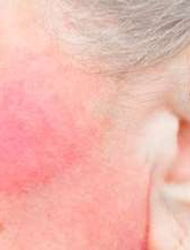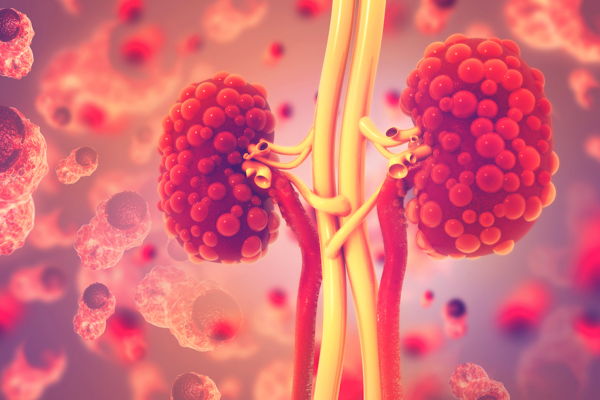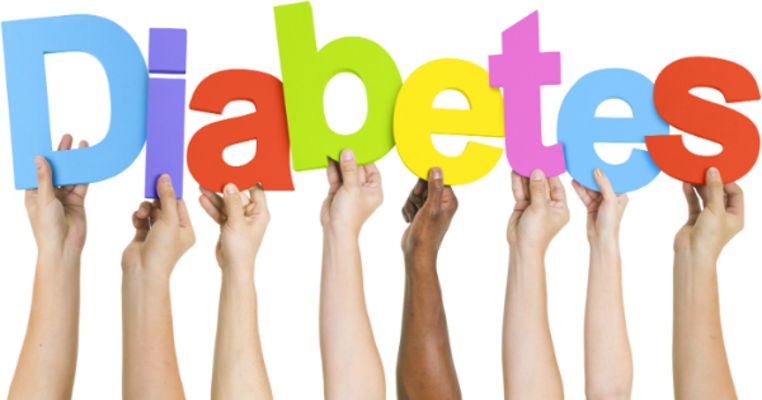Tuberculosis: 19 Warnings Signs to Watch Out For
Thursday September 6, 2018 by Marianne Gutierrez 2,237 words
1. History Warns Us
Tuberculosis used to be called Consumption and was the major cause of death, with Hippocrates naming it as the most widespread disease of his age. TB has never gone away and is today one of the top 10 causes of death worldwide. Therefore it is essential that symptoms are not ignored. TB needs several months of antibiotics before the disease is under control.
Hippocrates identified phthisis, or consumption, as the most widespread disease of his age. It was almost always fatal. Because of that, he advised his followers and students against treating late-stage consumption to avoid damage to their reputations.
Nikodash / shutterstock.com
2. Trouble Breathing
Since tuberculosis affects the lungs, it makes it difficult to breathe, and shortness of breath is common. Trouble breathing may began during physical activity, but as the disease progresses, those with tuberculosis will find even routine activities difficult to accomplish.
Alice Day / shutterstock.com
3. Night Sweats
A cough and night sweats are the two most significant symptoms that give the clue to what is ailing you. The night sweats can leave you drenched and sopping wet. While these symptoms are typical of TB they may also indicated other medical problems. Always consult your medical practitioner.
At first, it felt like a bad cold. Then came a constant cough and night sweats. After going to the hospital for what she thought was severe pneumonia, Nicole was soon diagnosed with TB. “I didn’t really understand very much about TB at all, and I didn’t realize at that time that anyone can get it,” Nicole says.
tab62 / shutterstock.com
4. Loss of Appetite
The immune system’s response to pathogens is to reduce the appetite in a bid to kill the invader which is why those suffering with a TB infection have little appetite. However part of the cure for TB is to maintain a good nutritional status and when appetite is absent this is tricky. One way is to consume bone broths from good quality sources. They not only contain a raft of nutrients that quickly boost immunity but are also very easy to digest.
Good broth will resurrect the dead, says a South American proverb. Said Escoffier: Indeed, stock is everything in cooking. Without it, nothing can be done.
Kleber Cordeiro / shutterstock.com
5. Symptoms Outside of the Lungs
TB may also damage the brain and spinal cord. This is actually a rare occurrence and is called Tuberculous Meningitis caused by the mycobacterium tuberculosis. Other organs it can affect are the kidneys which may cause blood in the urine. If persistent headaches, back pain and/or blood in the urine are present then please see your health practitioner.
xsense / shutterstock.com
6. Traveling or Living in Other Countries
There are 22 countries listed as being high-burden TB areas, and the Bacillus Calmette–Guérin vaccine — which is primarily used against tuberculosis — is only effective for those in the 16 - 35 age group. If you are unable to have the BCG vaccination, then you must maintain strict hygiene standards and good nutrition when traveling in the high-burden TB countries.
Top 20 by estimated absolute number (in alphabetical order) Angola, Bangladesh, Brazil, China, DPR Korea, DR Congo, Ethiopia, India, Indonesia, Kenya, Mozambique, Myanmar, Nigeria, Pakistan, Philippines, Russian Federation, South Africa, Thailand, UR Tanzania, Vietnam.
Franco Volpato / shutterstock.com
7. Living in Hot Countries
Twenty-two warm weather countries are classified as being High Burden TB. The inhabitants of these countries are darker in complexion due to melanin, the pigment that is produced to protect the skin from the sun’s burning rays. People with dark-colored skin synthesize less vitamin D on exposure to sunlight than those with light-colored skin. Vitamin D is in charge of triggering the antimicrobial peptide, cathelicidin, in the body.
Cathelicidin has healing antibiotic, antiviral, and anti-fungal properties. Insufficient Vitamin D production will negatively impact the immune system therefore making one more susceptible to contracting TB. To make up for the lack of Vitamin D extracted from the sun a diet of Vitamin D rich foods is recommended, for example: eggs, animal fats, milk , cheese, and oily fish.
The strongest known link between vitamin D metabolites and the immune system relates to the effects of vitamin D metabolites on the production of cathelicidins, a critical family of antimicrobial proteins. Cathelicidins act by disrupting foreign-cell membranes, binding lipopolysaccharide residues, and recruiting leukocytes. In animal models, deficiency of cathelicidin is associated with increased susceptibility to bacterial infection.
Anton_Ivanov / shutterstock.com
8. Long-Term Living in Crowded Conditions
Research showed that TB became more contagious and spread very quickly if the people lived in crowded conditions. This is because the TB infection is spread by droplets leaving the nose and mouth which can be from: speaking, singing, laughing, coughing, sneezing. If this is you, living in a crowded situation, then see your medical practitioner for tests. In the meantime, maintain strict hygiene procedures and good nutrition.
One of the world’s leading killers, tuberculosis (TB) is nearly as old as humanity itself; fossilized evidence of this lethal infection has been found in a Homo erectus skeleton half a million years old. But look to a modern hospital in a developed country, and you’d be hard pressed to find more than a few cases. For centuries, TB has been linked anecdotally with environmental risk factors that go hand-in-hand with poverty: indoor air pollution, tobacco smoke, malnutrition, overcrowded living conditions, and excessive alcohol use.
artphaneauf / shutterstock.com
9. Malnourished and Secondary Conditions
Evidence demonstrates that malnutrition can lead to secondary immunodeficiencies that increase the individual’s susceptibility to infection and TB. Secondary immunodeficiencies are diseases that cause the immune system not to work effectively for example: HIV, chemotherapy, severe burns or malnutrition. A host (individual carrying the bacteria) with mycobacterium tuberculosis and malnutrition will automatically have a weakened immune system due to being malnourished. To prove this point it was found that when good food was introduced providing all the nutrients a body must have, that TB patients’ recovery improved.
Poverty, food insecurity and poor nutrition in the population are important contributors to the burden of tuberculosis (TB). This paper reports on the primary lessons from the review of the World Food Programme’s (WFP’s) Food Assistance Programme for TB patients in Afghanistan. It also documents qualitative findings that suggest that patients, their families and providers viewed food support as an important asset and an essential element of the national TB control strategy.
coffee prince / shutterstock.com
10. Substance Abuse
Cigarettes and other substances suppress the appetite. The brain initiates appetite but if it is getting a ‘hit’ from the substance, the appetite is suppressed, food is not consumed and malnutrition can result. Malnutrition causes alterations to the individual’s immune system and an inability to fight an infection. A faulty immune system increases the risk of tuberculosis and, due to an alteration in the individual, affects the protective function of the immune system’s T Lymphocytes and macrophages.
It has long been apparent that infectious mortality is elevated in undernutrition and obesity and that immunodeficiency is a hallmark of malnutrition.
monticello / shutterstock.com
11. Poor Living Conditions
Poor living conditions compromise the immune system and increase the spread of disease. Poor living conditions can be: not getting enough sunlight, damp home, vermin infestations, sleeping for too long, going to bed late and getting up late, lack of hygiene, dirty surfaces, not washing hands, not covering the mouth when coughing; all these aspects compromise and weaken the immune system. When the immune system is weakened by the poor living conditions, and there has been exposure to TB, a TB infection may result.
It is easier to get TB if you have little or no heating and live in damp, dark or dusty conditions without windows you can open. TB bacteria can live for longer in damp and dusty rooms where there’s no fresh air. If it’s dark, the bacteria can’t get killed by sunlight.
Yavuz Sariyildiz / shutterstock.com
12. Lack of Medical Care
Lack of medical care or lack of seeking medical care when symptoms are present causes the immune system to fight harder to maintain health. If the condition is HIV the immune system is further compromised. To reduce the likely-hood of TB being triggered, if you have symptoms of any kind, you should see a medical practitioner for advice. The homeless are particularly at risk if they have no medical care support.
Malawi is a low-income country with high Tuberculosis (TB) burden. TB diagnosis delay and untimely initiation of treatment is still a major problem in Malawi which could increase the risk of tuberculosis transmission in the communities.
Travel Stock / shutterstock.com
13. Host to the Bacteria Mycobacterium Tuberculosis
A healthy immune system is able to kill the TB bacteria. If you are host to the mycobacterium tuberculosis it has been shown that when living in healthy conditions and a healthy diet keeping you symptom free, the bacteria will not be triggered to be active and if it is, the body’s healthy environment can kill the TB infection.
If you are healthy, you probably have a strong immune system and your body can fight off infections from bacteria or viruses easily. So if you breathe in TB bacteria, your immune system would probably kill them off straight away, without you ever getting ill or knowing about it.
metamorworks / shutterstock.com
14. Cough
There are two types of TB, Latent TB or Active TB. Latent TB means you carry the bacteria that causes it but it is inactive in your body and you are not contagious. If you have a healthy immune system it will probably never develop into an infection.
Active TB, can be further divided into two patterns of the disease - Primary seen in children as the initial infection, and Secondary seen mostly in adults as a reactivation of a previous infection. Active TB is when the Latent TB condition is making you ill.
Active TB can occur in the first few weeks after infection or it may occur years later. TB is spread by microscopic droplets carrying the mycobacterium tuberculosis bacteria and released into the air when speaking, singing or coughing.
_If you have been coughing for longer than 3 weeks you must seek advice from your Medical Healthcare Provider. _
Tuberculosis (TB) is a potentially serious infectious disease that mainly affects your lungs. The bacteria that cause tuberculosis are spread from one person to another through tiny droplets released into the air via coughs and sneezes.
UV70 / shutterstock.com
15. Chronic Pain from Cough
A chronic cough will also produce pain because of the mycobacterium tuberculosis cells adhering to and breaking down the cells of respiration in the lungs. This creates cavities when the sufferer is coughing, which leads to the unbearable pain in those with TB.
GM mice have helped identify a key enzyme responsible for destroying lung tissue in tuberculosis (TB). Medicines that inhibit this enzyme are already available, so may be able to reduce deaths from TB.
ChameleonsEye / shutterstock.com
16. Weight Loss
One of the factors of avoiding TB is eating nutritionally. Those with latent TB do not succumb to TB because of their healthy lifestyles, which include eating healthily and living in good conditions. Those who get well from TB also include a good nutritious diet.
Tuberculosis patients often suffer with weight loss, which is considered to be immunosuppressive and a major determinant of the severity and outcome of the disease.
Mita Stock Images / shutterstock.com
17. Fatigue
Fatigue when you are not well is due to most of the energy in the body going to fight the infection. You may not realise you are ill, until you feel fatigued and lacking in energy and wonder why. One of the first symptoms of TB is a chronic cough and if you have fatigue as well, it is essential you seek advice.
The most common symptoms of TB are: a cough for three weeks or longer, extreme tiredness or lack of energy, night sweats, weight loss, loss of appetite and high temperature.
ANN PATCHANAN / shutterstock.com
18. Fever
Fever including chills and night sweats are all symptoms of the immune system fighting an infection. It does not necessarily mean you have TB, but a fever with a cough may, and you would be strongly advised to seek the advice of a medical practitioner.
Rawpixel.com / shutterstock.com
19. Back Pain
Back pain is a common problem and if interventions by your Medical Practitioner or Health Therapist does not exact a reduction and/or a cure, then you may need to see a specialist as Spinal TB may be the cause of your back pain. Spinal TB in some areas has such a low incidence it is not recognized by the medical practitioners.
Chronic back pain is an extremely common complaint. All primary care physicians will be on the lookout for the ‘red flags’ that suggest serious pathology. The diagnosis of spinal infection with tuberculosis (TB) is uncommon and often not considered, especially in areas where the rate is very low.
Albina Glisic / shutterstock.com

16 Warning Signs of Lupus to Watch Out For
1. Unexplained Fever Lupus can affect everyone differently and some may have …


21 Features of Kidney Disease
1. Dizziness Kidney Disease is when the kidneys are not filtering blood …


Top 10 Foods to Nourish Your Thyroid
Did you know that the food you eat can affect your thyroid health? Some foods …


12 Facts About Your Borderline Personality …
1. It's Finally Classified As a Mental Illness Borderline Personality Disorder, …


12 Common Factors That Trigger Rosacea …
1. Makeup Some products used on the face and body or in the mouth ie: make-up, …


22 Common Symptoms of Type II Diabetes
1. Mood Changes Mood change is sometimes one of the first symptoms to suggest …
